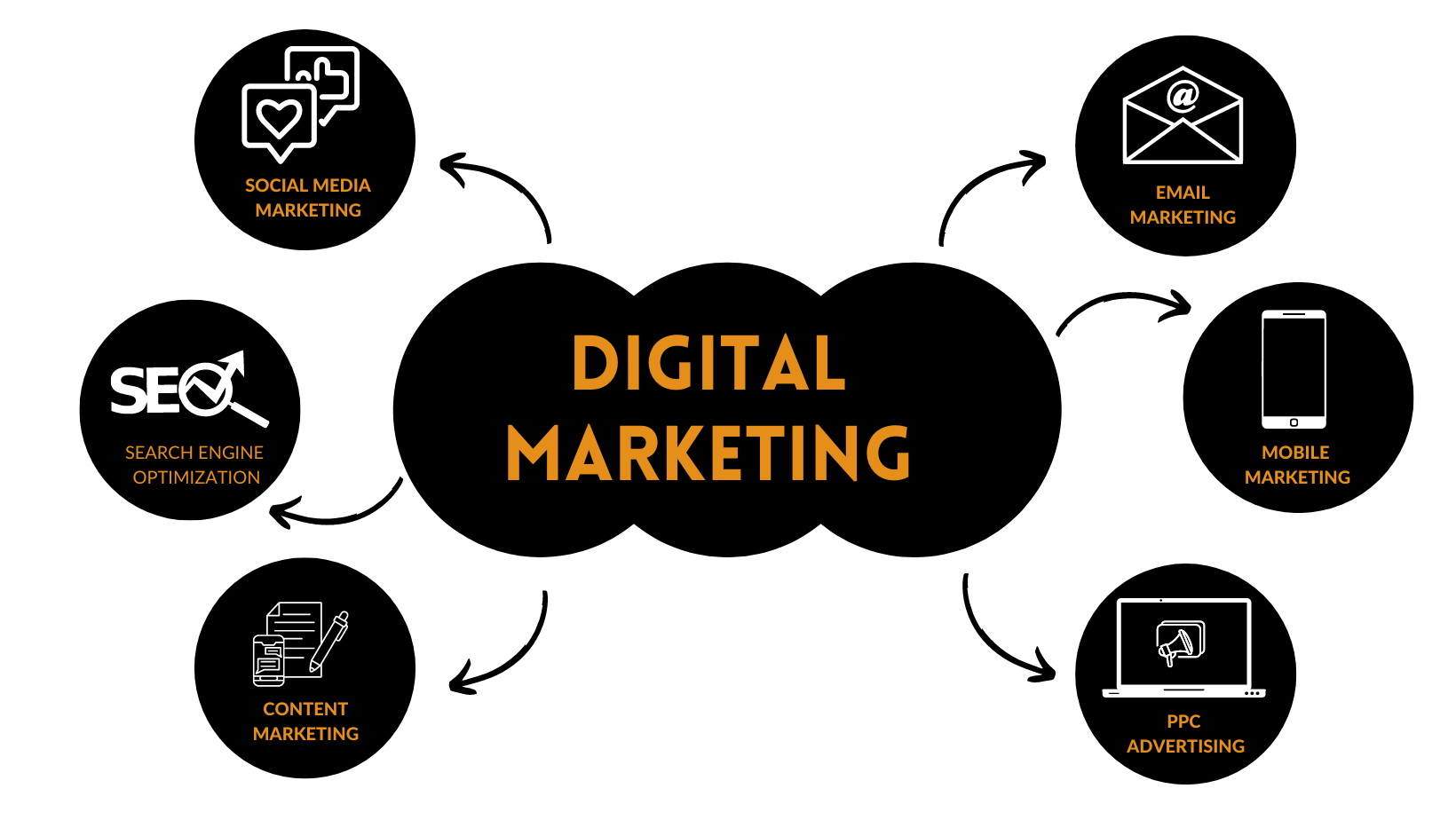What Includes Digital Marketing?
What Includes Digital Marketing?
Blog Article
Digital marketing has become the backbone of modern business promotion. From startups to global corporations, every brand is investing in digital strategies to build awareness, attract customers, and drive conversions. But what includes digital marketing, exactly? This comprehensive guide from Website Or Page breaks it down.
Introduction to Digital Marketing
Digital marketing refers to all marketing efforts that use the internet or an electronic device. Businesses leverage various digital channels such as search engines, social media, email, and websites to connect with current and prospective customers. The primary goal is to promote products, build brand visibility, and drive revenue.
Unlike traditional marketing, digital marketing allows for real-time data analysis, precise targeting, and cost-efficient campaigns. But to fully understand it, we need to look at the key components that make up this vast and dynamic field.
[caption id="" align="aligncenter" width="1640"]
 Expert Digital Marketing Services[/caption]
Expert Digital Marketing Services[/caption]Core Components of Digital Marketing
1. Search Engine Optimization (SEO)
SEO is the process of optimizing your website to rank higher on search engine result pages (SERPs) like Google. A well-implemented SEO strategy increases visibility and organic traffic.
Key elements of SEO include:
Keyword research
On-page optimization (meta tags, headings, URLs)
Off-page optimization (backlinks)
Technical SEO (site speed, mobile-friendliness)
Content creation with target keywords
By understanding what includes digital marketing, it becomes clear that SEO is essential for long-term growth.
2. Content Marketing
Content marketing involves creating and distributing valuable, relevant, and consistent content to attract and retain a clearly defined audience.
Types of content include:
Blog posts
Ebooks and whitepapers
Infographics
Videos
Podcasts
Content not only supports SEO but also builds brand authority, educates customers, and generates leads.
3. Social Media Marketing (SMM)
Social media marketing focuses on engaging users and promoting your brand across social platforms like Facebook, Instagram, LinkedIn, Twitter (X), and TikTok.
Social media activities include:
Posting regular updates
Running ads and sponsored content
Engaging with followers
Influencer marketing
Social media contests
Social media helps businesses reach wider audiences, humanize their brand, and foster customer loyalty.
4. Pay-Per-Click Advertising (PPC)
PPC is a form of online advertising where advertisers pay each time a user clicks on their ad. It’s commonly associated with search engine marketing (SEM), especially on platforms like Google Ads and Bing Ads.
PPC includes:
Search ads
Display ads
Shopping ads
Remarketing campaigns
With PPC, businesses can instantly drive traffic, test new offers, and generate leads with measurable ROI.
5. Email Marketing
Email marketing remains one of the most effective digital channels for customer engagement and retention. It allows direct communication with your audience through personalized messages.
Email campaigns include:
Newsletters
Promotional offers
Abandoned cart emails
Welcome sequences
Customer retention series
A well-structured email strategy keeps your audience informed and boosts conversions.
6. Affiliate Marketing
Affiliate marketing involves partnering with individuals or companies (affiliates) who promote your products in exchange for a commission on sales generated through their links.
Affiliate marketing benefits include:
Low upfront costs
Access to new audiences
Performance-based returns
This strategy helps expand your reach without heavy advertising spend.
7. Influencer Marketing
Influencer marketing taps into the reach and credibility of online personalities to promote products or services. It’s particularly effective in niches like fashion, fitness, tech, and beauty.
It includes:
Sponsored posts
Product reviews
Giveaways
Affiliate partnerships
Influencer marketing builds trust quickly and generates authentic engagement.
8. Mobile Marketing
Mobile marketing refers to reaching users on smartphones and tablets via SMS, mobile apps, push notifications, and mobile-optimized websites.
Popular mobile strategies:
Location-based marketing
App-based marketing
Mobile-friendly content
QR codes
With mobile usage dominating digital consumption, mobile marketing is essential for success.
9. Marketing Automation
Marketing automation uses software to automate repetitive tasks like email follow-ups, social media posting, and lead nurturing. Tools like HubSpot, Mailchimp, and ActiveCampaign are commonly used.
Automation helps with:
Lead segmentation
Campaign management
Behavioral targeting
Real-time analytics
It increases efficiency and enhances personalization across channels.
10. Online Public Relations (PR)
Online PR involves managing your brand’s reputation in the digital space. It includes outreach to online publications, securing backlinks, handling reviews, and managing crisis communication.
Online PR tactics include:
Guest blogging
Press release distribution
Responding to online reviews
Engaging in online communities
Online PR supports SEO, builds credibility, and enhances brand visibility.
Why Understanding Digital Marketing Matters
Knowing what includes digital marketing empowers businesses to choose the right mix of strategies based on their goals and budget. Whether you’re aiming to drive more traffic, increase conversions, or grow brand awareness, a comprehensive digital marketing plan is crucial.
At Website Or Page, we help you decode and implement each aspect of digital marketing to meet your unique business objectives.
Report this page